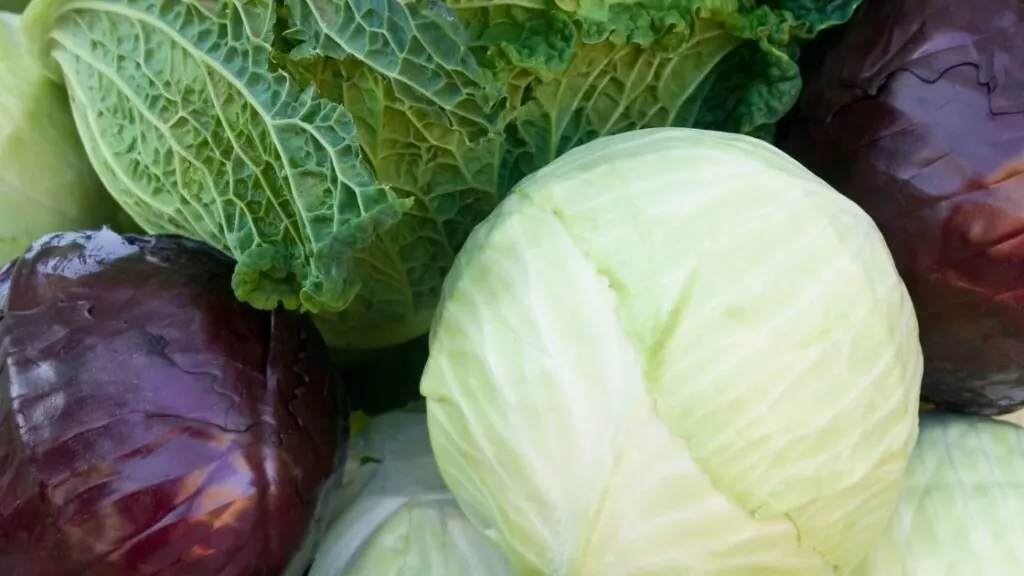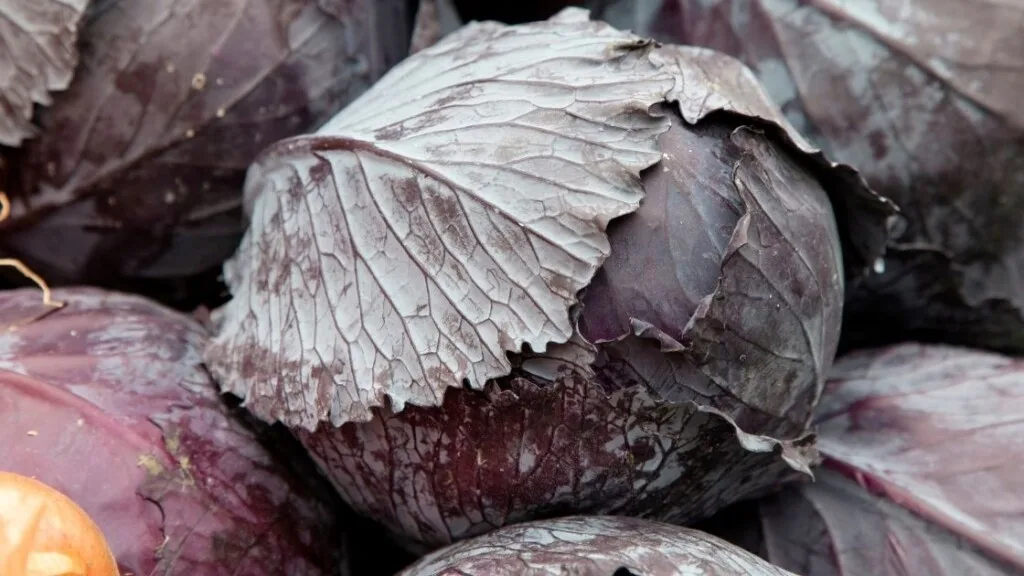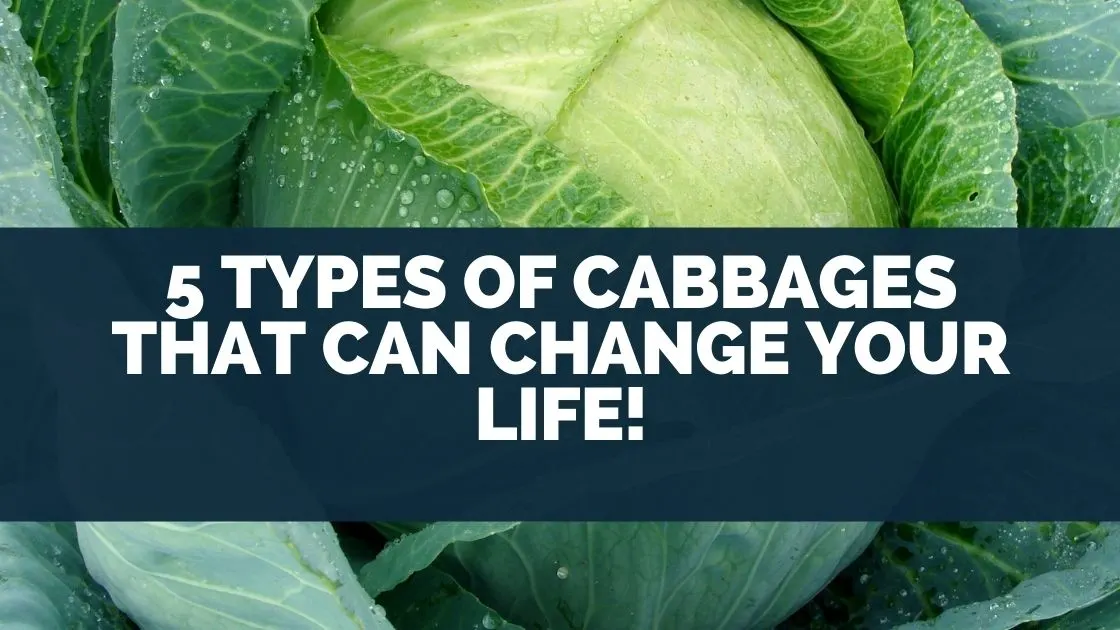 Cabbage is a nutritious and cost-effective vegetable. It also has a wonderful flavor and may be utilized in a variety of ways. You can enjoy the hot spice of raw cabbage or the sweetness of cooked cabbage, which both have a crisp texture.
Cabbage is a nutritious and cost-effective vegetable. It also has a wonderful flavor and may be utilized in a variety of ways. You can enjoy the hot spice of raw cabbage or the sweetness of cooked cabbage, which both have a crisp texture.
Here are five types of cabbage that might change your life!
Table of Contents
What Are Cabbages?
Cabbages are a large family of vegetables grown for their dense, crunchy heads. They’re typically considered cold weather crops and are used most often in the winter. Cabbage is actually part of the plant family known as Brassicaceae or mustard family.
Like its cousins’ broccoli, kale, cauliflower, Brussels sprouts, and collard greens, cabbage comes from the same plant species: Brassica oleracea.
The five types of cabbages profiled below are cruciferous vegetables known for their high vitamin C and K content.
They’re a part of a healthy diet that can provide a variety of health benefits including improved heart health, digestive system support, and bone health.
Types of Cabbages

White Cabbage / White Head Cabbage
White cabbage is called “white” because the leaves are lighter in color than green, red, or Savoy cabbages. This cabbage forms a compact round head that’s typically eight to 12 inches in diameter with light green outer leaves surrounding white or pale yellow inner leaves.
The flavor of white cabbage can be described as mild, sweet, and tangy. This cabbage is common in Central European cuisine, specifically in German and Polish dishes.
Whitehead cabbage is significantly more nutritionally dense than green cabbages, with a higher vitamin C content and lower amounts of carbohydrates. The vegetable also contains vitamins A, E, and K along with the minerals calcium, magnesium, phosphorus, and potassium.
White cabbage is recommended for inclusion in a healthy diet to promote digestion and bowel regularity, prevent constipation and reduce the risk of cancer. It may also improve heart health and bone health to help prevent osteoporosis and keep bones strong.
Green Cabbage / Green Head Cabbage
Greenhead cabbage is named for its dark green outer leaves. It’s sometimes called Dutch cabbage, but it isn’t related to the vegetable of the same name that is popular in Chinese cooking.
This cabbage forms a compact round head that’s typically eight to 12 inches in diameter with dark green outer leaves surrounding white or pale yellow inner leaves.
Green cabbage has a more pungent flavor than white or red cabbage, so it’s typically used in dishes where the flavor is complemented by sauces. This variety is popular in Central and Eastern European cuisine, including stuffed cabbage rolls, sauerkraut, and coleslaw.
Greenhead cabbages are considered high in nutrition value when compared with other varieties of cabbage. They contain vitamins A, C, and K along with the minerals manganese, calcium, magnesium, phosphorus, and potassium.
The vegetable may also promote heart health by lowering blood pressure levels.
Red Cabbage
Red cabbage is sometimes called purple cabbage because it has a blue-red outer coloration which can appear purple when raw. This cabbage is also called “purple cabbage” because of its deeper color. Red cabbage is typically smaller than green cabbages, forming a dense round head with smooth leaves.
The leaves are firmer and more strongly flavored than white or green varieties, which makes them popular for use in dishes that feature strong flavors like vinegar sauces.
Red cabbage contains antioxidants that may help prevent damage to cells that can result in heart disease, cancer, and other life-threatening health conditions. It may also improve digestive health by promoting bowel regularity.
Red cabbage is recommended for inclusion in a healthy diet because of its high levels of vitamin K, which plays an important role in blood clotting. It’s also rich in vitamins A and C, along with the minerals calcium, magnesium, phosphorus, and potassium.
Savoy Cabbage
Although Savoy cabbage is in the same genus as white cabbages, it’s typically more delicate than other varieties. This cabbage has crinkly leaves that range in color from light to dark green with bluish-green outer leaves.
Savoy cabbage grows in a loose, cone-like shape with leaves that are typically smooth and wavy.
Savoy cabbages are commonly used to make coleslaw because they’re more delicate than other varieties. They also contain antioxidants that support heart health, promote healthy skin and protect cells from damage by free radicals.
Savoy cabbage is recommended for inclusion in a healthy diet to improve digestion and promote bowel regularity.
It may also be beneficial for heart health because of its relatively high levels of vitamin C and apigenin, an antioxidant that protects cells from damage by free radicals.
Napa Cabbages
Napa cabbage is a type of Chinese cabbage named for its place of origin in China’s Napa Valley. This variety is also called Peking cabbage because it was originally grown in the Chinese city of Peking (now known as Beijing).
This variety has crinkly leaves that white head with smooth, wavy edges and thick veins.
Napa cabbages have a mild flavor that’s less pungent than other varieties of cabbage. This makes them popular for use in stir-fry dishes and sandwiches, where the strong flavors of other vegetables would overwhelm this variety.
Napa cabbage is recommended for inclusion in a healthy diet to improve digestion and promote bowel regularity. It may also be beneficial for heart health because of its relatively high levels of vitamin C.
How To Store Different Kinds Of Cabbages?

Each of these types of cabbages can last a long time when stored properly. Cabbage should be refrigerated as soon as possible to avoid decay, and it’s best to store uncut heads in a plastic bag with a damp cloth or paper towel over them.
Green, red, and Savoy cabbages should be used within about three weeks to prevent spoiling, while Napa cabbage should be used within about 10 days.
Cabbage can also be stored in the freezer to prolong its shelf life.
It will become limp when thawed, but it can still be used for cooking or as a side dish.
You can also read: How Do You Store Leafy Greens in the Fridge?
Conclusion
In conclusion, cabbage can provide a wide range of health benefits. Cabbage comes in several varieties, each with its own unique qualities. Red cabbage is often used for its vibrant color and high levels of antioxidants; Napa cabbage is popular for use in stir-fry dishes;
Savoy cabbages are delicate and sweet; green cabbages are considered to be the most nutritious, and white cabbages are typically used in coleslaw or salads.
It’s recommended that cabbage should be included in a healthy diet to get all of these benefits. Cabbage can also be stored properly so it lasts longer, which is convenient for busy lifestyles.


Leave a comment